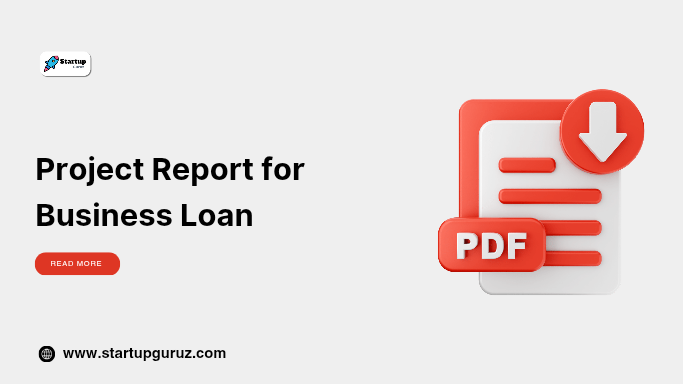Project Report for Business Loan
Comprehensive Guide to Creating a Project Report for Business Loan
Securing a business loan often requires submitting a well-prepared project report. This document serves as a blueprint for your business and a key factor for lenders to evaluate your loan application. A thorough, detailed, and professional project report can significantly improve your chances of securing a business loan.
In this guide, we will cover the essential elements, steps, and tips for creating a project report for a business loan, along with answers to frequently asked questions.

What Is a Project Report for a Business Loan?
A project report for a business loan is a detailed document that outlines your business idea, operational plan, financial projections, and loan requirements. It demonstrates to the lender the viability of your business and your ability to repay the loan.
Importance of a Project Report for Business Loans
- Clear Business Overview: Provides a snapshot of your business.
- Financial Viability: Highlights your capacity to repay the loan.
- Transparency: Builds trust with lenders by showcasing detailed planning.
- Compliance: Aligns with lender requirements for loan applications.
- Risk Mitigation: Addresses potential risks and their mitigation strategies.
Key Elements of a Project Report for Business Loans
1. Executive Summary
An overview of your business plan, including objectives, vision, and the purpose of the loan.
Tip: Keep it concise and engaging.
2. Business Description
Details about your business, including:
- Type of business (startup, expansion, etc.).
- Products or services offered.
- Target market.
3. Market Analysis
Demonstrates a deep understanding of your market and competitors.
Key Points to Include:
- Market size.
- Customer demographics.
- Competitor analysis.
4. Organizational Structure
Outlines the management hierarchy and team qualifications.
Include:
- Details of key personnel.
- Roles and responsibilities.
5. Financial Plan
The financial section is crucial for lenders. Include:
- Income statement.
- Balance sheet.
- Cash flow projections.
6. Loan Details
Explain the loan amount required, its purpose, and repayment strategy.
Tip: Be specific about how the funds will be used (e.g., purchasing equipment, marketing, etc.).
7. Risk Assessment
Identify potential risks and their mitigation strategies.
8. Supporting Documents
Attach relevant documents, such as:
- Registration certificates.
- Tax filings.
- Financial statements.
Steps to Create a Project Report for Business Loans
Step 1: Understand Lender Requirements
Different banks or financial institutions may have specific requirements for project reports. Research and tailor your report accordingly.
Step 2: Use a Professional Format
Structure your report with headings, subheadings, and bullet points for clarity.
Step 3: Provide Accurate Data
Ensure all financial and market data is accurate and up-to-date.
Step 4: Use Visuals
Incorporate graphs, charts, and tables to make data more digestible.
Step 5: Proofread and Review
Eliminate errors and ensure the report aligns with your business goals.
Tips for Writing an Effective Project Report
- Focus on Clarity: Use simple and professional language.
- Be Honest: Avoid exaggerating financial projections or downplaying risks.
- Highlight Strengths: Emphasize unique aspects of your business.
- Back Up Claims: Support statements with data and research.
- Update Regularly: Keep the report current and relevant.
Sample Outline for a Business Loan Project Report
- Title Page
- Business Name
- Contact Details
- Executive Summary
- Business Description
- Market Analysis
- Organizational Structure
- Operational Plan
- Financial Plan
- Loan Requirements
- Risk Assessment
- Appendices (Supporting Documents)
10 FAQs About Project Reports for Business Loans
1. Why is a project report important for a business loan?
It provides a detailed plan that demonstrates the viability of your business to the lender.
2. What should be included in the financial plan?
Include income statements, balance sheets, cash flow projections, and funding requirements.
3. How detailed should the market analysis be?
The market analysis should include data on market size, customer demographics, and competitor strategies.
4. Can I use a template for my project report?
Yes, templates can help ensure your report is structured and professional.
5. Do banks provide specific formats for project reports?
Some banks may provide formats; it’s best to check with your lender.
6. How do I justify the loan amount in the report?
Break down the loan amount and explain how each portion will be used.
7. Should I include potential risks in the report?
Yes, identifying risks and providing mitigation strategies shows preparedness.
8. How long should a project report be?
It should be detailed but concise—around 15-20 pages, depending on the business.
9. Can a project report improve my chances of loan approval?
Yes, a well-prepared report demonstrates professionalism and improves credibility.
10. Do I need professional help to prepare a project report?
While you can create one yourself, hiring a professional ensures accuracy and adherence to standards.